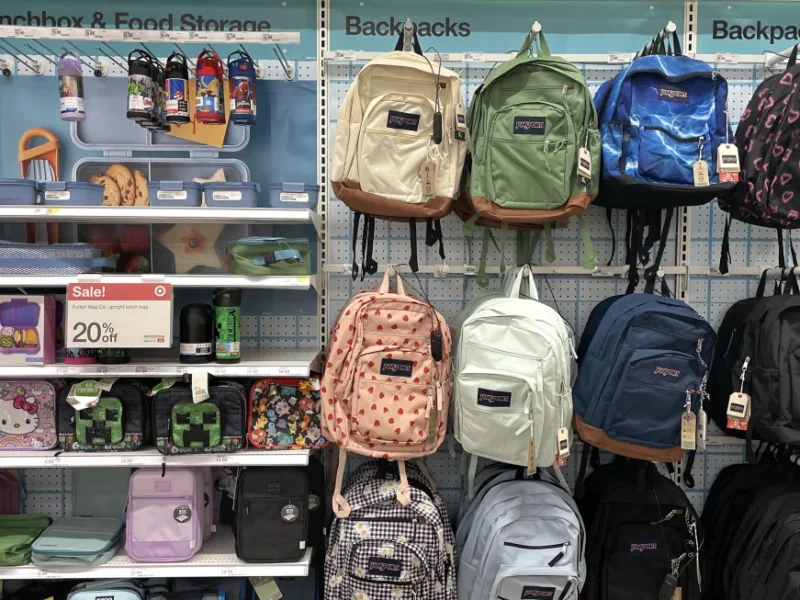Last year, back-to-school shopping reached a record $41.5 billion, or over $890 per household, marking a 12% increase from 2021. This spike was driven by a strong labor market, easing inflation, and a resilient economy.
However, this year, consumer spending has cooled as they deal with the cumulative effects of price increases and navigate economic uncertainty. Despite inflation nearly subsiding, the NRF expects 2024’s back-to-school spending to be the second-highest on record at $38.8 billion, or $874.68 per household.
How this plays out will be a key indicator of consumer behavior and the health of the economy. According to Mark Mathews, NRF’s research director, while people still intend to spend, they’re becoming “very, very price-conscious.”
Consumers are focusing on bargain hunting and opting for cheaper supplies.
Typically, items like stationery, apparel, and electronics are considered discretionary spending. However, these categories have seen significant declines during the recent spending slowdown. Back-to-school shopping, however, is an exception.
Mark Mathews from the NRF highlights that back-to-school shopping is essential, not discretionary. For instance, parents must buy furniture for college students or shoes for growing kids. While consumers can’t eliminate essential spending, they can reduce it—41% of surveyed consumers are actively looking for deals.
Retailers are responding with promotions to attract price-conscious shoppers. Although inflation remains elevated, it’s mostly driven by service-based categories like housing, while goods have seen disinflation or even deflation. S&P Global Market Intelligence expects retail prices to drop 0.7% this year after rising in the previous two years.
Some school supplies are cheaper than last year, with sticky notes down 22%, paper down 20%, and crayons and pencils down 19% and 13%, respectively. Crayons and sticky notes are even cheaper than in 2019, down by 7% and 12%.
There are still indications of hope.
Average hourly and weekly earnings have consistently outpaced inflation for over a year, according to Bureau of Labor Statistics data. This trend has supported consumer spending, a key driver of the economy.
Duleep Rodrigo, KPMG’s US consumer and retail sector leader, mentioned in a CNN interview that back-to-school spending is expected to be comparable to last year. He noted that their latest consumer survey revealed more positive attitudes towards fall shopping, a contrast to the more pessimistic outlooks seen in the summer survey. Rodrigo linked this shift to higher expectations for interest rate cuts and discounts, which could also positively impact the holiday shopping season.
“Consumers are showing greater optimism in their spending,” Rodrigo added.
“I’m negotiating the deals.”
For some families, spending—especially on back-to-school items—has changed significantly compared to previous years.
In Shoreline, Washington, Amanda Webber and her family have been tightening their budget due to medical expenses from Webber’s recent brain surgery. Although she is recovering and plans to return to work soon, their monthly budget was significantly impacted.
To save money, the family shops at Costco, buys in bulk, plans meals in advance, and avoids using the air conditioning to reduce the electricity bill. Back-to-school expenses follow this trend.
“I’m working the deals,” Webber said. She’s actively seeking online coupons, comparing prices, exploring clearance racks, and participating in a local “buy nothing” group. They even repurposed sheets from old notebooks.
Webber noted that spending has been highly focused, with most of it going towards a professional outfit for their 16-year-old daughter. “I think the shoes were the most expensive part,” Webber, 49, added.

Lisa Castruita and her daughter, Anisa Page, in December 2022.
A shift in spending habits.
In Gainesville, Florida, Lisa Castruita, 46, and her teenage daughter follow the principle: “Do more with less, or make do with what you have.”
Castruita explained to CNN, “We need to be smart about our actions and decisions, similar to how older generations managed with less.”
The pandemic and its aftermath were pivotal for Castruita, especially after losing her husband to Covid in 2021. “Previously, with more support and income, I didn’t hesitate to buy everything new. Now, as a single parent, I’ve had to adopt a more prudent approach due to rising costs,” she said.
With her daughter entering 11th grade, Castruita aims to avoid the excesses of past back-to-school seasons. She noted, “We often end up spending on things that aren’t necessary, resulting in debt and unused items.”
Besides being resourceful and finding deals, Castruita values the support of her “tribe”—friends and family—who have provided gently used clothes, haircuts, and school supplies at little to no cost.
As a result, Castruita estimates her back-to-school spending is 60% to 70% lower this year compared to previous years. This approach allows her to allocate funds towards meaningful experiences with her daughter. “The current economy demands lifestyle changes and smarter, more grounded decisions,” she said.











